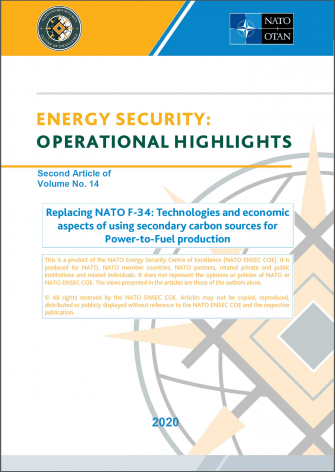Replacing NATO F-34: Technologies and economic aspects of using secondary carbon sources for Power-to-Fuel production
Developments during the latest decades have put the issue of climate change as the priority for most of NATO members, which actively strive to reduce the negative environmental impacts of their military activities while ensuring energy security for their forces. As this article propose, the combination hydrogen derived from electrolysers and powered by electricity from renewable sources with carbon monoxide derived from non-fossil carbon dioxide sources, can make a contribution to reduce environmental and health risks. Therefore, this article draws attention to carbon dioxide capture technologies from point sources and ambient air as well as highlights cost estimates of various combinations of Power to Liquid (PtL) technologies.
In presenting technologies and economic aspects of using secondary carbon sources for Power-to-Fuel production, this study additionally describes a number of secondary carbon sources and principal separation techniques in order to obtain CO2 from them: pre-conversion capture, oxy-fuel combustion capture, CO2-caputre from ambient air. This article outlines the steps involved to produce liquid fuels for replacing fossil carbon based F-34 and diesel for propulsion and transportation purposes. Besides, this study identifies the most promising places to produce liquid fuels for replacing fossil carbon with respect of costs, geographic regions and promising secondary CO2-sources.
Based on the analysis of this article, there are some conclusions: if H2 and CO2, as synthetic fuel precursors, are produced using energy from renewable sources, and CO2 is reused, these fuels do not contribute to increase of CO2 concentrations in the atmosphere. On the other hand, the technologies for H2 production and CO2 capture as well as for fuel production are currently not yet in a mature state. Additionally, synthetic fuels’ production costs are currently not competitive at all compared to the much lower price for fossil fuels.
Read the study: https://www.enseccoe.org/data/public/uploads/2020/08/nato-ensec-coe-oh-14-replacing-nato-f-34.pdf

